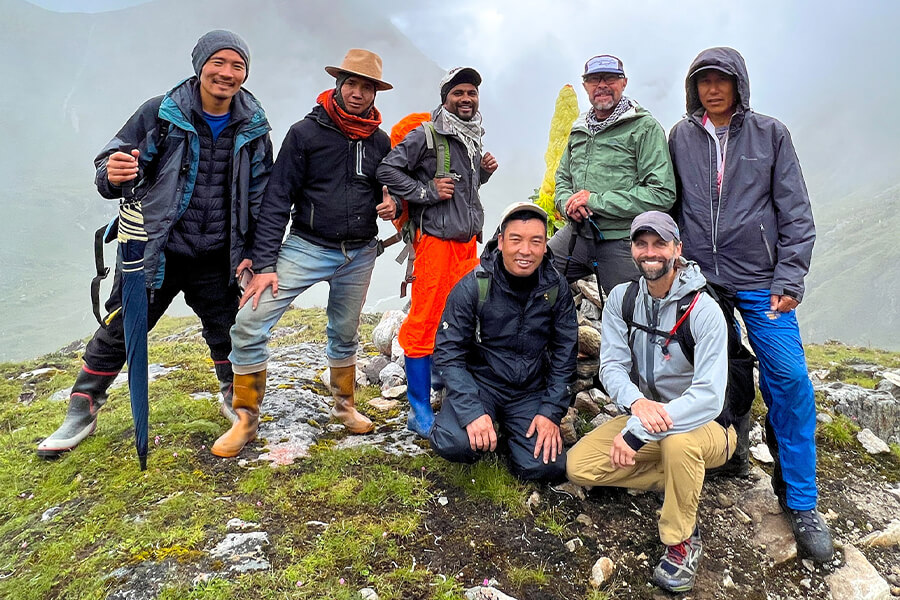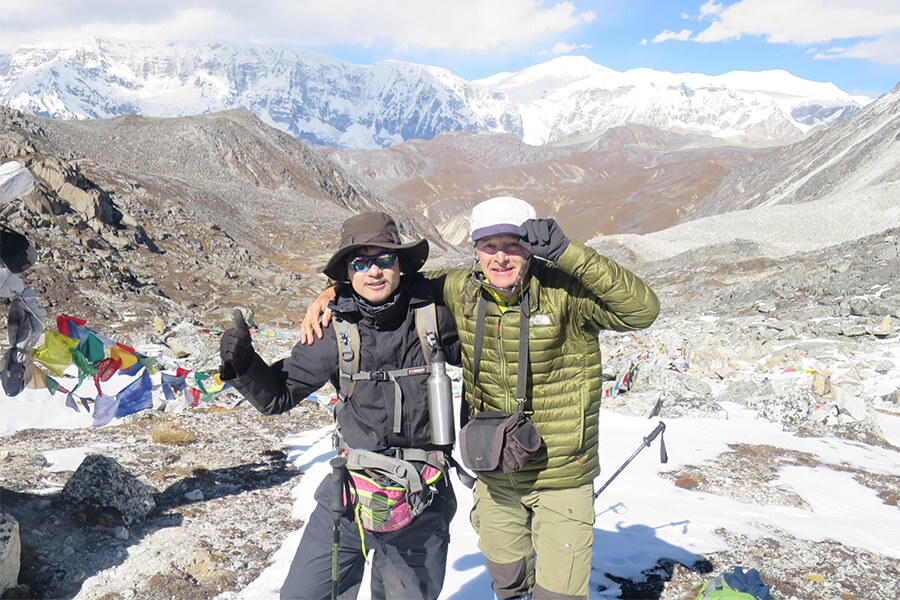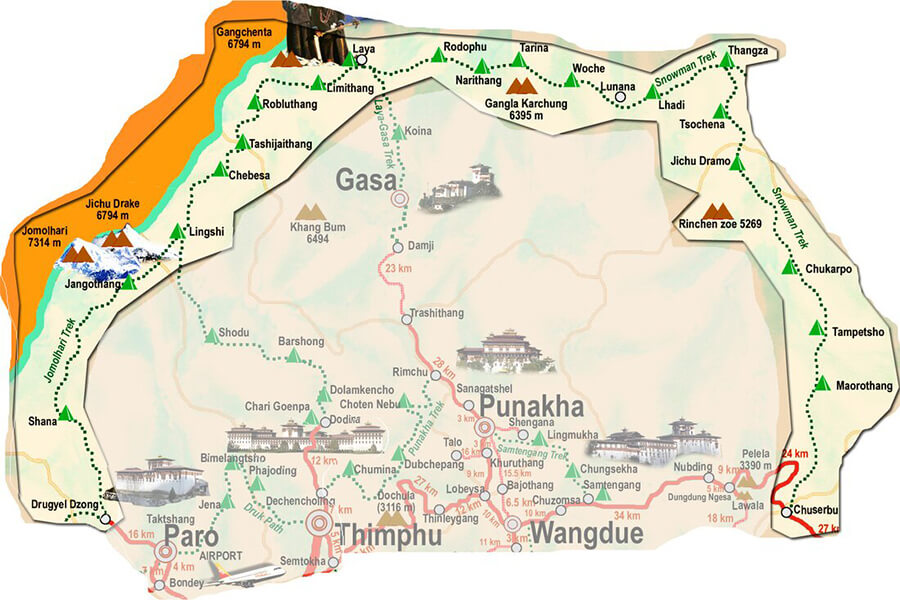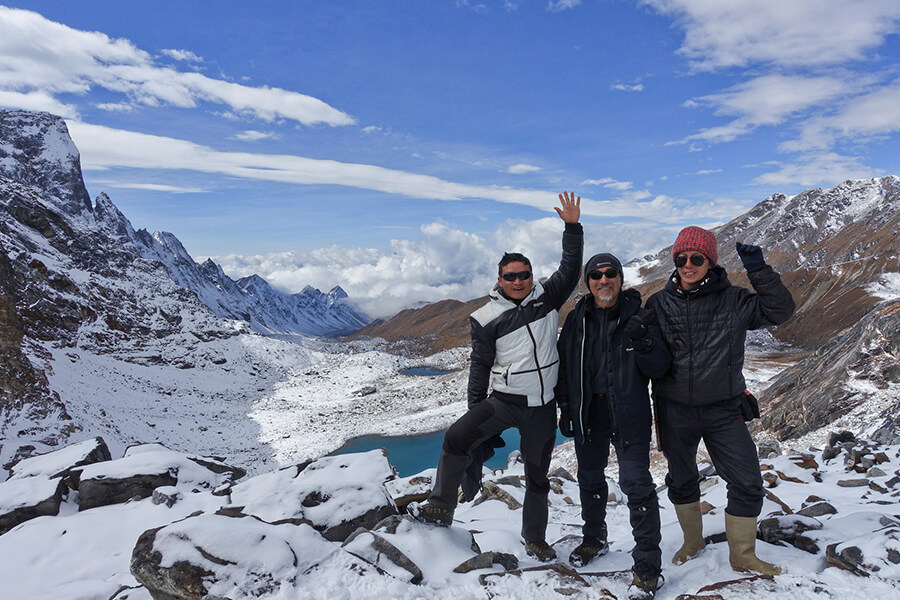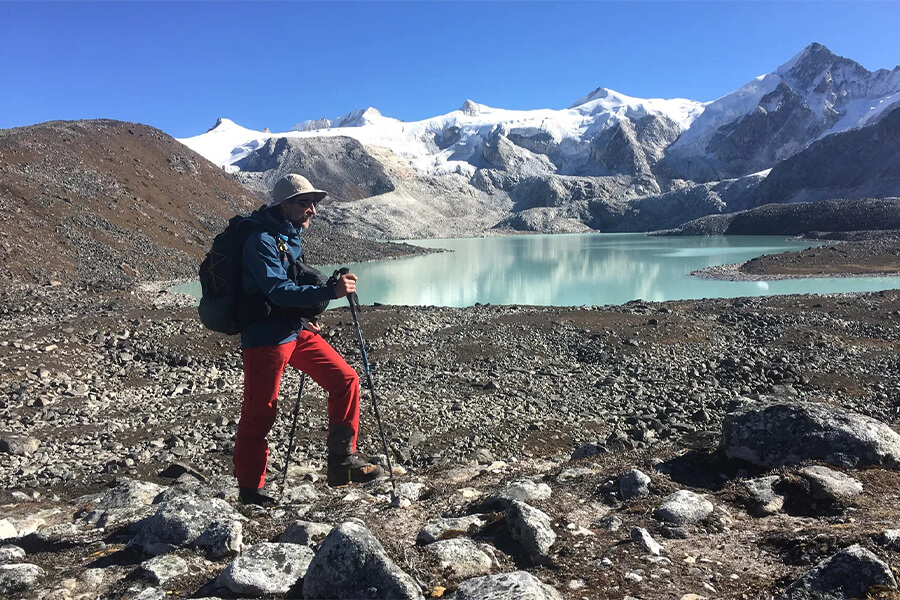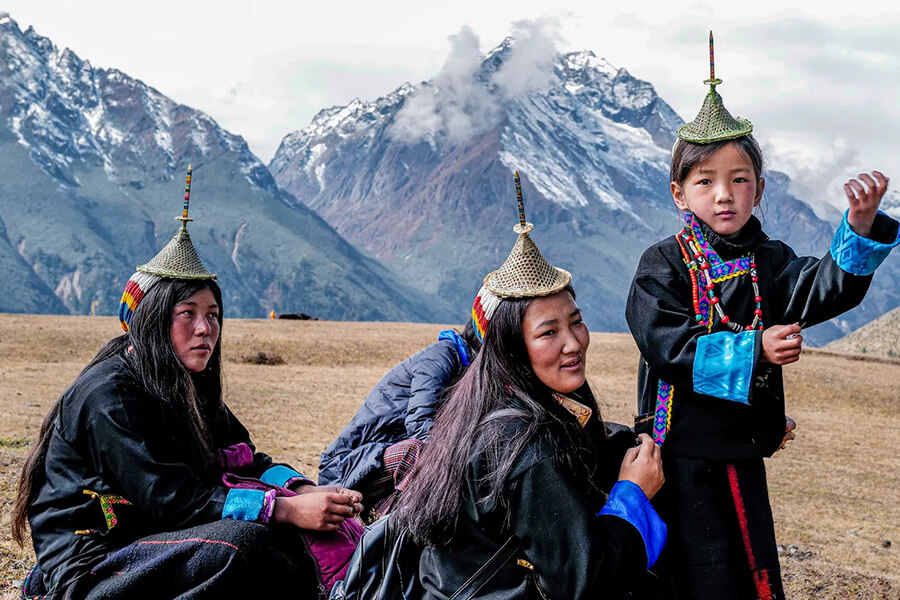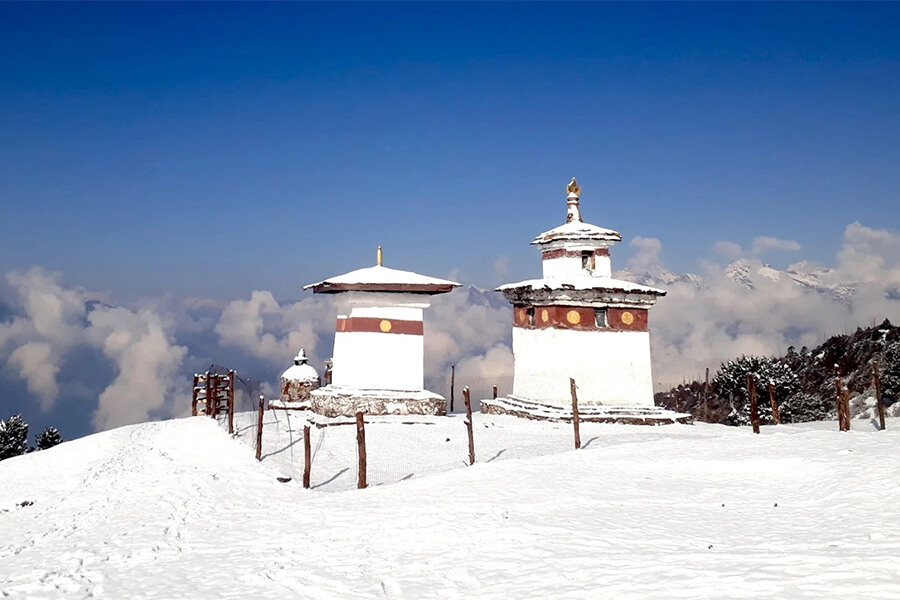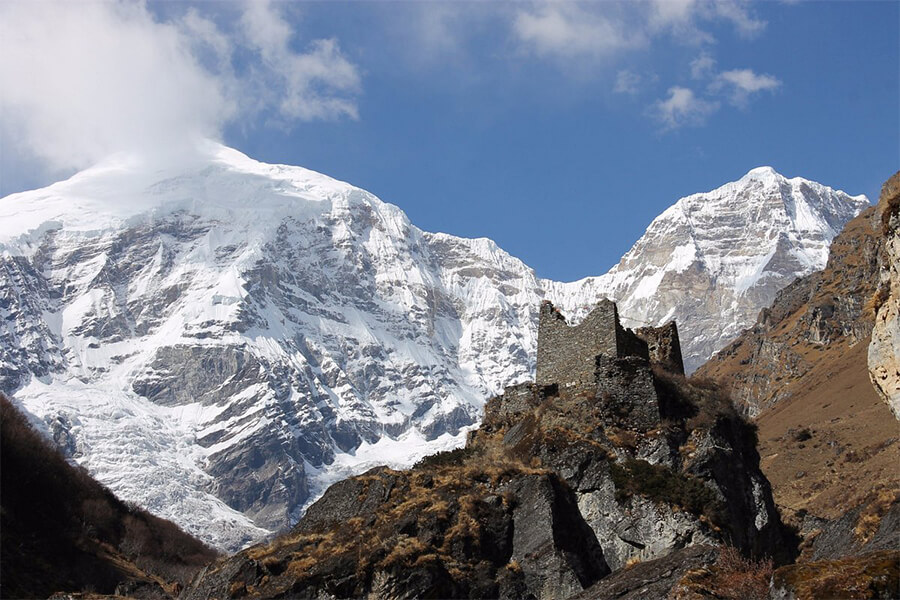For travelers seeking the most challenging and awe-inspiring adventure in the Himalayas, the Snowman Trek in Bhutan stands as the crown jewel. It is not just a trek - it’s a journey through the untouched wilderness, ancient Buddhist culture, and the spirit of the Land of the Thunder Dragon. Many Bhutan tour packages include sections of this legendary route or shorter treks inspired by it, offering a rare chance to experience Bhutan’s pure landscapes and deep-rooted traditions. Whether you’re an experienced mountaineer or a passionate explorer looking for a once-in-a-lifetime expedition, combining the Snowman Trek Bhutan with tailor-made Bhutan tour packages allows you to uncover the true essence of this mystical Himalayan kingdom - where nature, culture, and spirituality blend seamlessly.
Introduction to the Snowman Trek in Bhutan
The Snowman Trek in Bhutan is often described as the world’s toughest and most spectacular high-altitude trek. Stretching across the remote northern reaches of the Kingdom of Bhutan, this journey traverses some of the highest passes in the Himalayas and takes adventurers through pristine valleys, ancient villages, and landscapes untouched by modernity. More than just a test of endurance, the Snowman Trek Bhutan offers a deep immersion into Bhutan’s spiritual and natural essence - a country where Gross National Happiness matters more than wealth and where the mountains themselves are considered sacred.
The Bhutan Snowman Trek was first completed by a handful of explorers in the late 20th century, and since then, it has gained legendary status among experienced trekkers worldwide. Only a few hundred people attempt the Snowman Trek in Bhutan each year due to its difficulty, isolation, and unpredictable weather conditions. However, for those who do, the experience is life-changing - an authentic encounter with the raw, spiritual heart of the Himalayas.
Distance: 340+ km
Total Ascent: 15,000+ metres
Max Altitude: 5400 metres
Duration: 28 days minimum
Style: Camping
Best time to go: September and October
Snowman Trek Bhutan Map
The Snowman Trek Bhutan map reveals an ambitious route that spans the country’s northern border with Tibet. Beginning typically from the district of Paro or Gasa and ending in Bumthang, the trail covers around 300 kilometers. The Bhutan trek Snowman passes through over ten high mountain passes - some exceeding 5,000 meters (16,400 feet) - including the Renchen Zoe La, Gangla Karchung La, and Loju La.
The map highlights a sequence of remote settlements and yak herder camps such as Laya, Lunana, and Woche, which are among Bhutan’s most isolated communities. Each village presents a glimpse into traditional life where people still rely on yaks for transportation and trade. The route meanders past turquoise glacial lakes, towering peaks like Gangkar Puensum (the world’s highest unclimbed mountain), and fertile valleys adorned with rhododendrons and alpine flowers.
Due to the trek’s remoteness, access is only possible through organized Bhutan trekking tours operated by licensed local companies. Each group travels with a full team of guides, cooks, and horsemen - ensuring both safety and support in the harsh Himalayan conditions.
Duration, Difficulty, and Best Time to Trek
The Snowman Trek Bhutan typically takes 25 to 30 days to complete, depending on the route and pace. It is considered one of the most demanding treks in the world - not only because of the distance but also because it stays above 4,000 meters for much of the journey. Trekkers face steep ascents, long descents, unpredictable weather, and limited access to medical facilities.
This Bhutan Snowman Trek is not suitable for beginners. Prior high-altitude experience, strong fitness, and endurance are essential. It’s common for participants to spend months preparing through hiking, strength training, and cardio exercises before arriving in Bhutan.
The best time to undertake the Snowman Trek in Bhutan is during autumn (late September to mid-November) or spring (April to early June). Autumn offers clear skies, stable weather, and magnificent views of snow-capped peaks, while spring brings vibrant alpine flora and milder temperatures. The monsoon season should be avoided due to heavy rains and the risk of landslides.
For those with limited time or seeking a slightly easier option, shorter sections of the Bhutan trek Snowman - like the Laya Gasa Trek - provide a glimpse into the same stunning landscapes and culture.
Major Highlights Along the Snowman Trek Bhutan
1. Crossing the High Himalayan Passes
One of the defining features of the Snowman Trek Bhutan is its series of breathtaking passes. Each ascent rewards trekkers with panoramic views of the Eastern Himalayas, including sacred peaks such as Jomolhari, Masagang, and Gangkar Puensum. The sense of isolation and scale is overwhelming, reminding adventurers why Bhutan remains a sanctuary for nature and spirituality.
2. Meeting the Highland Communities
The trek winds through ancient villages like Laya and Lunana, home to semi-nomadic yak herders who maintain a centuries-old way of life. These communities live in some of the world’s harshest conditions, yet their hospitality and warmth are unmatched. Visitors on the Snowman Trek in Bhutan often share butter tea, local cheese, or rice wine while learning about their resilience and traditions rooted in Buddhist values.
3. Pristine Glacial Lakes and Valleys
The Bhutan trek Snowman route is dotted with stunning lakes like Tshorim and Rinchen Zoe, shimmering beneath snow-capped peaks. These mirror-like waters are considered sacred, and locals believe deities reside within them. The trek also passes through lush meadows filled with wildflowers, forests of juniper and fir, and valleys alive with the sound of rushing rivers.
4. Spiritual Landmarks and Remote Monasteries
Though remote, spirituality is ever-present along the trail. Hidden monasteries and chortens (stupas) mark the journey, offering a glimpse into Bhutan’s deep Buddhist faith. Trekkers may encounter monks meditating in solitude or prayer flags fluttering atop mountain ridges - symbols of blessings carried by the Himalayan wind. The Snowman Trek Bhutan allows travelers to witness how deeply Buddhism and daily life intertwine in Bhutan’s highlands.
5. Wildlife and Nature Encounters
The Snowman Trek in Bhutan lies within protected areas like Jigme Dorji National Park, home to rare species such as blue sheep, Himalayan black bears, and the elusive snow leopard. Birdwatchers may also spot Himalayan monals, ravens, and lammergeiers soaring above the peaks. The preservation of Bhutan’s wilderness is a testament to its environmental ethos, making this trek not only challenging but also ecologically meaningful.
Tips for the Bhutan Snowman Trek
1. Train Thoroughly
Given the altitude and duration, physical preparation is crucial. Engage in cardio, hiking, and strength training for several months before your trip. Acclimatization is key, so consider arriving in Bhutan a few days early to adjust to the elevation.
2. Pack Smartly
Essential items include high-quality trekking boots, layered clothing for varying temperatures, a durable sleeping bag rated for sub-zero conditions, and waterproof gear. Most Bhutan trekking companies provide tents and cooking equipment, but personal comfort items like energy snacks and a power bank are valuable additions for the Snowman Trek Bhutan.
3. Choose a Reliable Tour Operator
Only licensed Bhutanese operators can arrange the Snowman Trek in Bhutan, as independent trekking is not permitted. Choose an experienced company with knowledgeable guides, proper logistics, and strong safety measures. Established tour operators ensure that porters, horses, and staff are well-equipped for the demanding terrain.
4. Respect Local Culture and Environment
Bhutan’s mountains are deeply sacred. Avoid littering, respect local customs, and always seek permission before photographing people or religious sites. Sustainable travel is at the core of Bhutan’s tourism philosophy, ensuring that future generations can enjoy its pristine wilderness.
5. Mental Resilience Matters
The isolation and challenging conditions can be mentally demanding. Expect long days of trekking, sudden weather shifts, and minimal communication with the outside world. However, this disconnection is also part of the Snowman Trek Bhutan experience - offering a rare opportunity to reconnect with oneself and the natural world.
Explore Bhutan Snowman Trek Tours - 28 Days
View Tour Details

